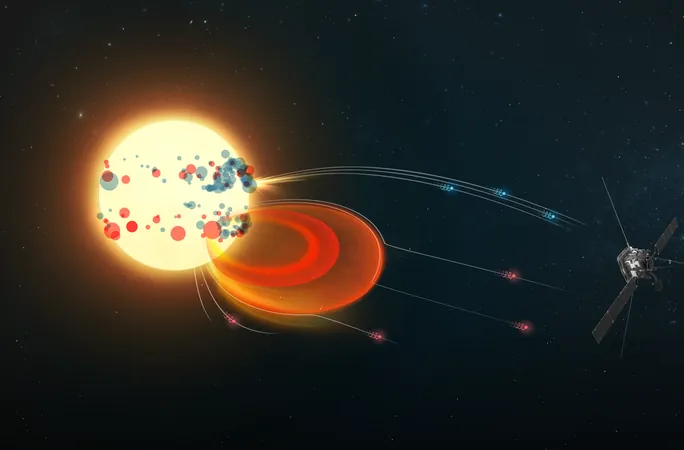
Solar Orbiter Unveils Secrets of the Sun's Superfast Electrons!
2025-09-01
Author: Wei Ling
Explosive Discoveries from the Sun!
The Solar Orbiter mission, led by the European Space Agency (ESA), has made groundbreaking discoveries by tracing superfast electrons back to their fiery origins on the Sun. This mission has revealed two distinct types of energetic particles, shedding light on the chaotic yet fascinating processes happening on our star.
The Sun: A Cosmic Particle Accelerator!
Known as the most powerful particle accelerator in our Solar System, the Sun hurls electrons at nearly light speed, creating a cascade of Solar Energetic Electrons (SEEs) that inundates the entire Solar System. Thanks to the Solar Orbiter, scientists have now determined the specific sources of these energetic electrons.
A Tale of Two Particle Events!
Researchers have identified two distinct categories of SEE events: one stemming from intense solar flares, and the other linked to massive coronal mass ejections (CMEs), which unleash vast clouds of hot gas. Lead researcher Alexander Warmuth explains, "We’ve distinguished between impulsive bursts from solar flares and gradual swells linked to extended CMEs, each presenting a unique particle release story."
Getting Closer to the Action!
Solar Orbiter’s ability to observe hundreds of particle events much closer to the Sun than past missions allowed scientists to gain unprecedented insights into how these electrons form and escape the solar surface. This proximity enabled the measurement of particles in their 'pristine' state, allowing researchers to pinpoint their origin more accurately.
Unlocking Mysteries of Particle Travel!
By analyzing SEE events captured from different distances, scientists have begun to answer why there can be delays in detecting these energetic particles after solar events occur. Co-author Laura Rodríguez-García notes, "The delay in seeing these particles can be due to turbulence and scattering in the charged particle wind that sweeps out from the Sun."
A Game-Changer for Space Weather!
Understanding these SEE events is vital for predicting space weather, crucial for protecting spacecraft and astronauts. One type of SEE linked to CMEs contains high-energy particles that are especially hazardous. Daniel Müller, ESA’s project scientist for Solar Orbiter, emphasizes that the findings will enhance safety measures for future space missions.
The Future of Solar Observations!
Looking ahead, ESA's upcoming Vigil mission aims to monitor the Sun like never before, anticipating solar events before they become visible from Earth. Alongside this, the Smile mission will further explore how Earth interacts with the solar particles that constantly bombard it.
Join the Cosmic Adventure!
Join the global scientific community in marveling at the wonders of our Sun! The data collected by Solar Orbiter forms a unique resource for researchers worldwide, pushing the boundaries of our understanding of solar dynamics and space weather.




 Brasil (PT)
Brasil (PT)
 Canada (EN)
Canada (EN)
 Chile (ES)
Chile (ES)
 Česko (CS)
Česko (CS)
 대한민국 (KO)
대한민국 (KO)
 España (ES)
España (ES)
 France (FR)
France (FR)
 Hong Kong (EN)
Hong Kong (EN)
 Italia (IT)
Italia (IT)
 日本 (JA)
日本 (JA)
 Magyarország (HU)
Magyarország (HU)
 Norge (NO)
Norge (NO)
 Polska (PL)
Polska (PL)
 Schweiz (DE)
Schweiz (DE)
 Singapore (EN)
Singapore (EN)
 Sverige (SV)
Sverige (SV)
 Suomi (FI)
Suomi (FI)
 Türkiye (TR)
Türkiye (TR)
 الإمارات العربية المتحدة (AR)
الإمارات العربية المتحدة (AR)